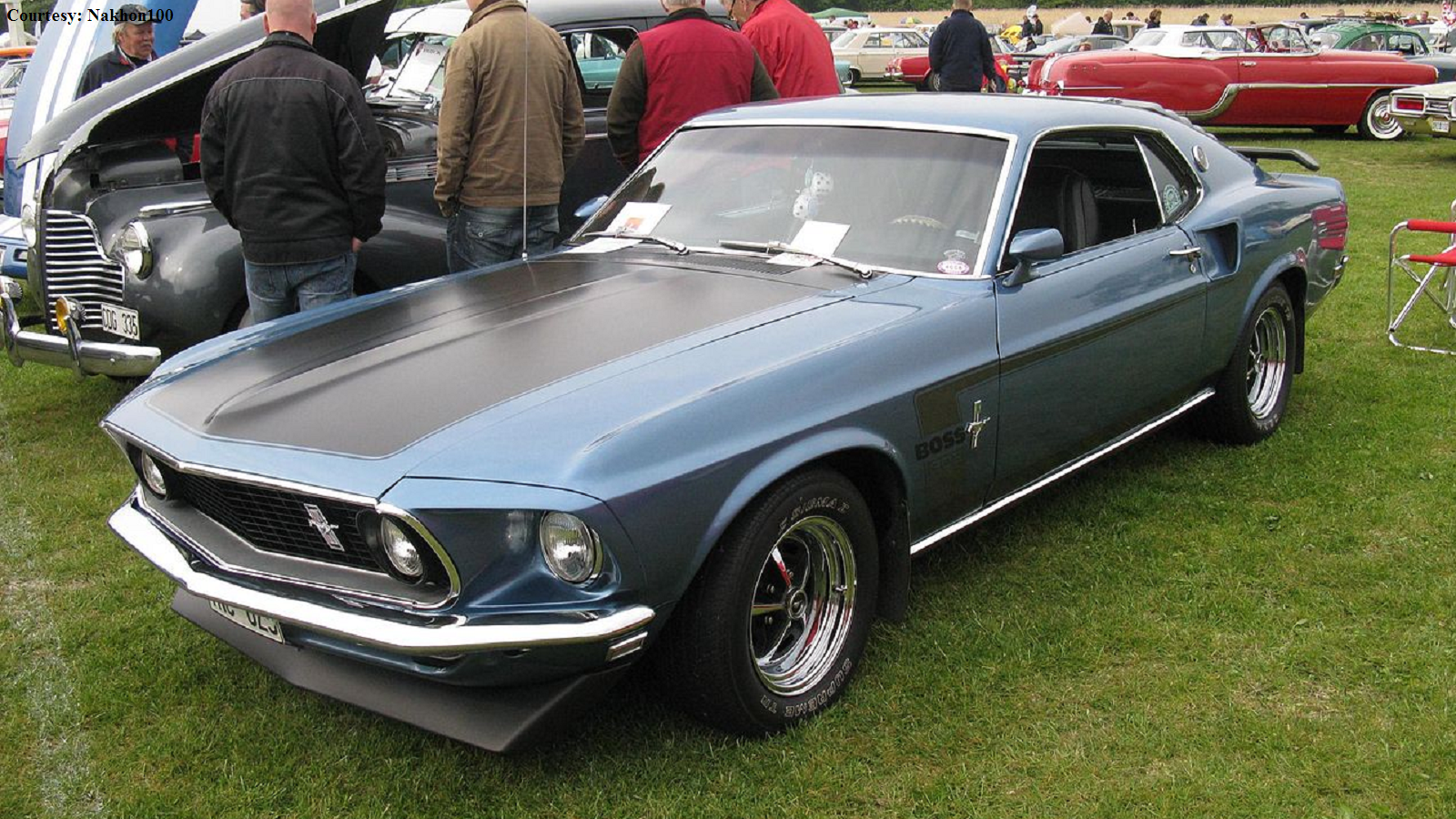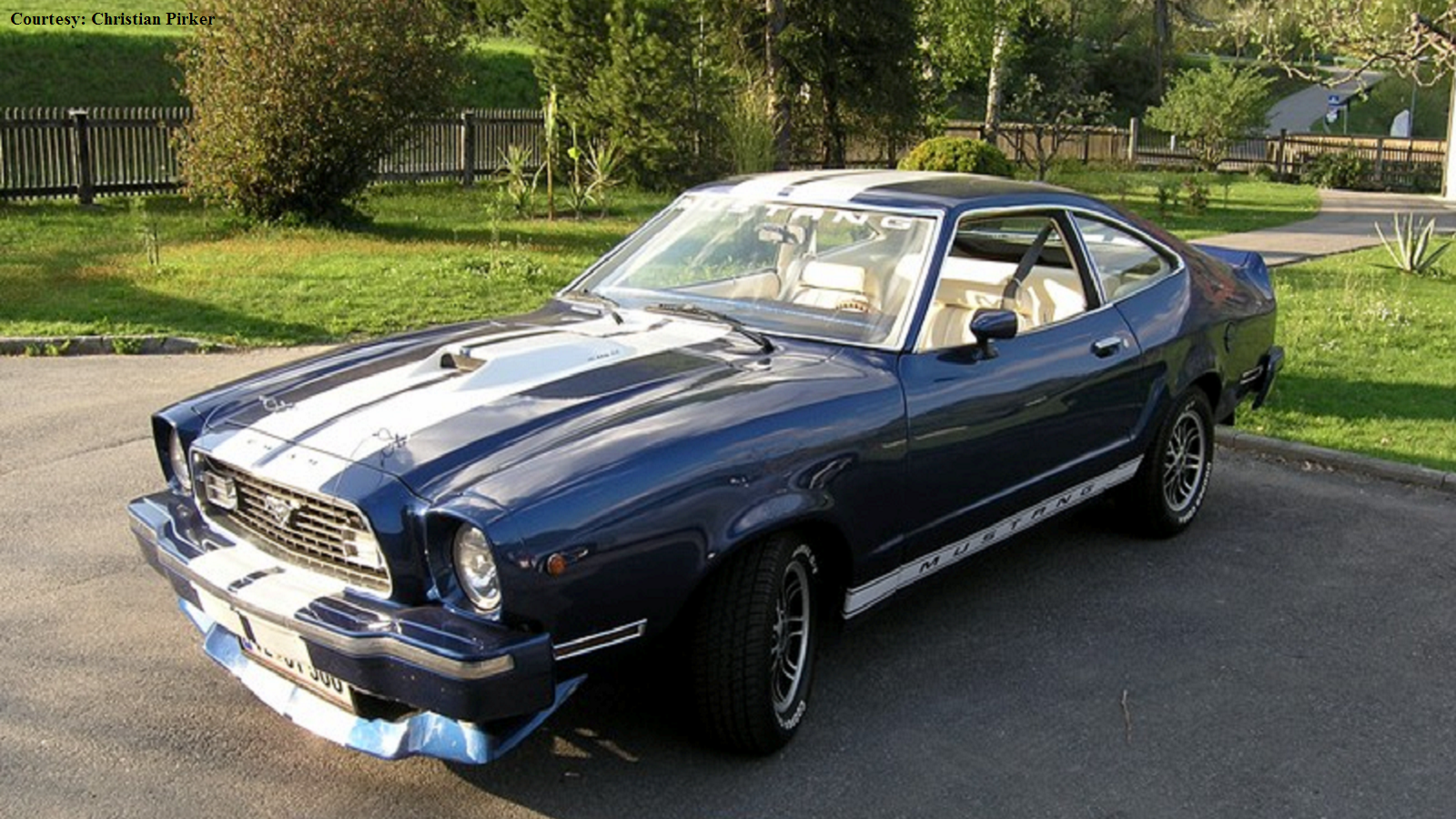The Evolution of the Mustang Design (photos)
The Ford Mustang has come a long way over the last 50 years and has gone through quite a few changes as the styling has evolved right along with ours. Let's take a look back at the car that's as Amercian as apple pie and cookouts.












1. 1st Generation (1964-73)
The Mustang was first envisioned way back when by one of Ford's biggest engineers, Donald Frey. Seen as a continuation of the company's established Thunderbird, the Mustang project was designed and built up in a year and a half. While other vintage American muscle cars, such as Chevrolet's Corvette, took a little while to find their place, the Mustang's sleek and distinctive look picked up immediately with consumers and soon inspired a horde of imitators for its "fastback" aesthetics. Interestingly enough, the Ford Mustang got an early demonstration in the James Bond film Goldfinger. While not driven by Bond himself, he does put his signature Aston Martin in a chase up against a Mustang. This helped to spread the word about the Mustang as the movie came before the car was widely available for the public's consumption.
>>Join the conversation about the Evolution of the Mustang right here in the Mustang Source Forum!
2. 2nd Generation (1974-78)
There is a general impression that Ford began to lose their touch as the first generation of the Mustang marched on. Following the perceived market trends, the Mustang has actually pulled away from its performance-centric origins to a vague luxury angle. Suffice to say, the move clashed with what people were looking for in the Mustang. The official beginning of the so-called "second generation" began when the Mustang nameplate was reconfigured back to a smaller, power-toting model more in keeping with its origins. Although the second round didn't enjoy the same kind of success as the amazing first years, the new fix on efficiency and compact sleekness went a long way towards getting people interested again. It's worthy to mention that the Second Gen Mustang is based on the body of the notoriously dubious Ford Pinto. Considering the immense difference between the ways the two brands are considered, it's interesting to think that the two were close cousins at a point.
>>Join the conversation about the Evolution of the Mustang right here in the Mustang Source Forum!
3. 3rd Generation (1979-93)
You'll often hear the 3rd Generation "1980s" Mustang being called a "Foxbody" by motoring enthusiasts. This is due to the fact that the Mustang at this point was based on the Fox platform, the same template used for the Fairmont, Durango and Mercury Zephyr, among others. While the Mustang lost its vintage aesthetic appeal at this point in favor of a modern overhaul, the larger body lent the car a more impressive interior that hadn't been seen on a 'Stang to that point.
>>Join the conversation about the Evolution of the Mustang right here in the Mustang Source Forum!
4. 4th Generation (1994-2004)
If the 3rd Generation 'Stang lent a major aesthetic overhaul over its predecessor, the 4th Generation made a mild difference in comparison. Though still based on that same Fox platform, the longer shape and contoured design were proof of the car's sustained evolution. Things under the hood continued to heat up, however; the 3.8 OHV V6 was making a base horsepower of 150 by the end of this relatively short production cycle. It's interesting to add as well that the Mustang discontinued its hatchback coupe option this time around.
>>Join the conversation about the Evolution of the Mustang right here in the Mustang Source Forum!
5.5th Generation (2005-14)
Something very interesting happened around the point of the 5th Generation; the old became new again. The Ford Mustang had looked a bit more innocuous throughout the 1980s and 90s, but the 5th Generation, first introduced in 2004 with a wide release in 2005, brought back traits of the vintage fastback appeal that made the early incarnations so classic. The successful interpretation of classic design choices only goes to show what a beaut the vintage Mustang truly was.
>>Join the conversation about the Evolution of the Mustang right here in the Mustang Source Forum!
6. 6th Generation (2015-Present)
The most recent Ford Mustang may not have had the groundbreaking appeal the nameplate inspired in the 60s, but Ford's decision to make the most recent design ever so slightly meaner than the previous decade has given it a similar role played by the 1990s 4th Generation after the big design shift in the 80s. The aggressive exterior is matched by the Cyclone V6 300hp and Coyote V8 435hp engine options. The Mustang's evolution may not have the same ground shaking twists and turns of competitor's designs, but looking at the various eras one by one says a lot about the Ford company's respect for tradition. It's been over fifty years now since the first Mustang hit the road, and in some ways, they've taken the recent models right back to the start.
>>Join the conversation about the Evolution of the Mustang right here in the Mustang Source Forum!
For help with service and mods on your Mustang, visit the how to section of our sister site MustangForums.com
